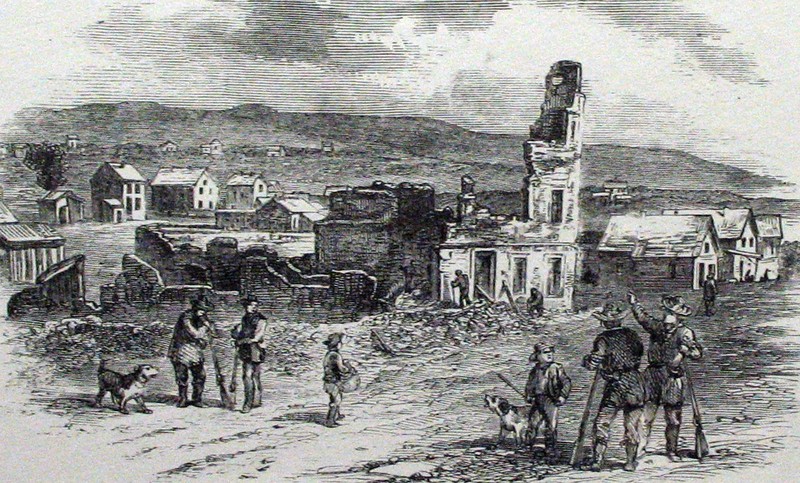The Sack of Lawrence, May 21, 1856
Introduction
Text-to-speech Audio
Images
An illustration of the 1856 Sack of Lawrence

Backstory and Context
Text-to-speech Audio
The Kansas-Nebraska Act of 1854 created the states of Kansas and Nebraska and opened them for settlers to move into. Because the power was given to white male settlers to decide whether they wanted it to be a slave or free state, the Missouri Compromise of 1820 was repealed. The Missouri Compromise was created in an attempt to partially ban slavery in the Western territories, making slavery illegal in the former Louisiana territory north of 36*, 30’ latitude, essentially north of present-day Arkansas, except in the land of present-day Missouri.
The abolitionists that settled Lawrence were part of the New England Emigrant Aid Company (NEEAC), which was formed for the purpose of battling the Kansas-Nebraska Act of 1854. This was seen by anti-slavery people as an aggressive move by the pro-slavery groups viewed, as it served to repeal the Missouri Compromise. The NEEAC provided settlers willing to move to Kansas with travel funds, at times covering up to 25 percent of the total cost, and resources to aid in settling the land.
Northern settlers also founded other Kansas towns, including Topeka, Manhattan, and Osawatomie. However, Lawrence served as the NEEAC’s regional headquarters, named after its treasurer Amos Lawrence and was considered an abolitionist stronghold. This made it a target for pro-slavery groups.
“Border ruffians” attacked Lawrence on May 21, 1856. The term “border ruffians” refers to pro-slavery people from Missouri who participated in Kansas politics in the hopes of making it a slave state in a number of illegal and extra-legal ways, such as coming to the territory on election days under the pretense that as long as they had no guaranteed plan to leave on a certain day they could be considered residents, or helping transport, and in some cases paying, pro-slavery families to move to Kansas and vote in elections. Kansas eventually entered the Union as a free state in 1861 and participated in the Civil War.
